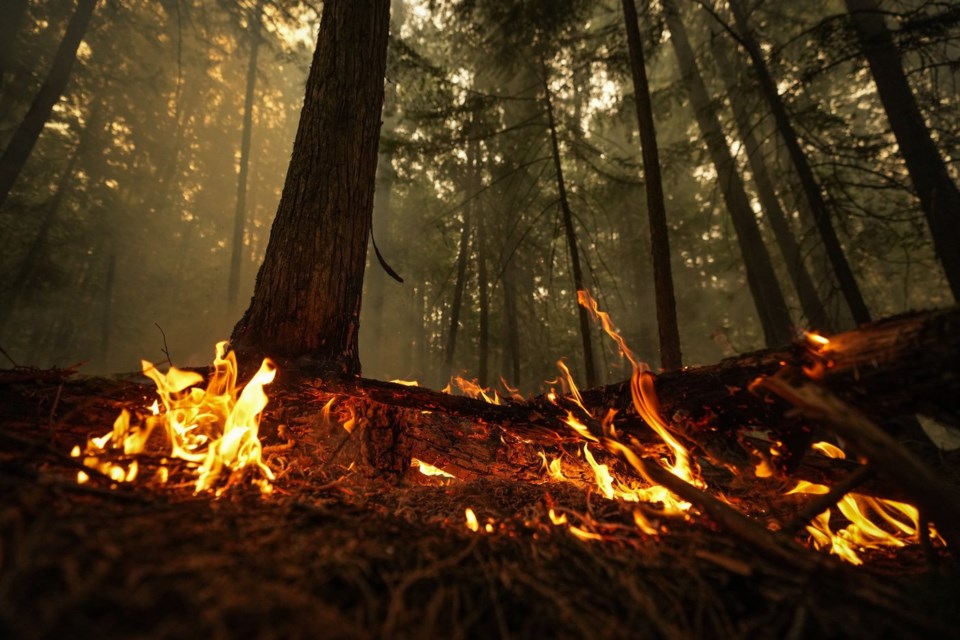The number of active wildfires in British Columbia has jumped by more than three dozen to nearly 140 amid a heat wave, which is creating prime conditions for fire.
There are two wildfires of note, meaning they are either highly visible or pose a threat to public safety, located in northwestern sa国际传媒
The BC Wildfire Service says smoke from the 130-hectare Little Oliver Creek fire will be visible from Highway 16 and the Terrace area, while the growing 355-hectare Hook Creek fire is burning out of control to the north, near the Yukon boundary.
In northeastern sa国际传媒, the Fort Nelson First Nation issued an evacuation order Tuesday for its Kahntah reserve, telling residents they had to leave by boat due to the threat of an out-of-control blaze discovered the day before.
The wildfire service has announced a provincewide campfire ban is set to take effect Friday at noon, with the exception of the Haida Gwaii forest district.
The fires come as a dayslong heat wave begins moving away from the coast toward the Prairies, while Environment sa国际传媒 heat warnings remain in effect for northeastern sa国际传媒 and parts of the central and southern Interior.
The wildfire service’s map shows a cluster of more than two dozen new fires sparked in the Cariboo.
In Quesnel, west of the new fires, Environment sa国际传媒’s forecast says Wednesday’s temperature will peak at 31 C with risk of a thunderstorm.
No fires are burning on Vancouver Island, according to the wildfire map, which indicates there have been 19 fires in the region so far this season.
Temperatures on Vancouver Island cooled somewhat on Wednesday but remained about five degrees above seasonal, and a cold front is due to sweep across northern sa国际传媒 on Thursday.
But the mercury is expected to hit 39 C in Kamloops Wednesday with temperatures in the mid-30s expected to persist in the Interior city until at least Tuesday.
A situation report posted by the BC Wildfire Service says the cold front in northern sa国际传媒 is expected to generate strong winds, thunderstorms and the potential for dry lightning in the region plagued by drought.
The bulletin says the service is anticipating new fire starts in the region.
The service says the system won’t be as strong in southern parts of sa国际传媒, but the southern and central Interior may experience increased winds and isolated dry lightning.
The service adds that its personnel are constantly monitoring and assessing conditions, and resources are deployed to areas of highest risk.
It said that of the 137 active fires as of mid-afternoon on Wednesday, 70 per cent were caused by lightning, 14 per cent were human-caused and 16 per cent had unknown causes.
Environment sa国际传媒 says 37 daily high temperature records were tied or set in sa国际传媒 on Tuesday.
The Lytton area was again a hotspot, recording a daily high of 42.5 C and breaking the previous record of 40.6 set on July 9, 1975.
In Campbell River, a new record of 33.4 C was set, just above the old record of 33.0 C set in 2010. The Malahat area recorded a temperature of 32.3 C, almost two degrees above the 30.4 C set in 2010.
That’s after dozens of daily records fell on Sunday and Monday in sa国际传媒
— With a file from the sa国际传媒
This report by The Canadian Press was first published July 10, 2024.






